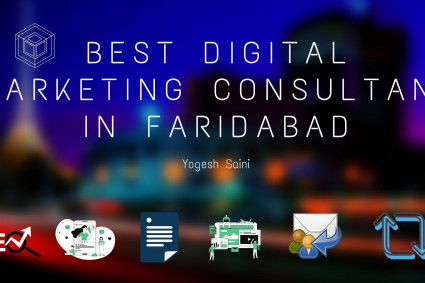It can be difficult to apply for a job for the first time. You may have come across the terms CV and resume throughout your investigation. Knowing the difference between a CV and a resume is critical if you want to promote yourself as a competent candidate while looking for jobs in the United States (or anywhere else in the globe).
Continue reading to discover about the differences between a resume and a curriculum vitae, the difference between a CV and a resume, when to use a CV versus resume, employer and country preferences, and more.
What Is A Curriculum Vitae (CV)?
A curriculum vitae (CV) is a document that summarizes information about your job, education, abilities, and accomplishments, as well as scholarships and awards. A CV is usually two to three pages long. Depending on your work experience, the length of your CV may vary.
There are three main CV formats to choose from:
Chronological CV—This is the most frequent curriculum vitae format, and it begins with your most recent position and works its way backwards. If you have prior work experience and want to highlight your talents and project experience, use a chronological CV.
This format, often known as a skill-based CV, focuses on your talents and professional experience rather than your chronological career history. A functional CV, while not as common as a chronological CV, may be beneficial if you have never worked before, have gaps in your job experience, or wish to change careers.
Combination CV—This format combines the chronological and functional CV formats. You may highlight your skills while also providing a chronological employment history by using a hybrid CV.
What Is The Purpose Of A Resume?
A resume is a document that summarizes your educational background, professional experience, and talents. The length of your resume may be determined by the number of years you have worked. It can, however, be restricted to a single page for the majority of candidates.
In general, there are four different kinds of resumes:
Chronological resume—Like a chronological CV, this resume format lists your work history in reverse chronological order, beginning with your most recent job. A chronological resume is the typical format preferred by many hiring managers.
Functional resumes place an emphasis on abilities and experience rather than work history. If you're changing careers or have minimal work experience, a functional resume structure is ideal.
A mixed resume combines chronological and functional resume forms. Before describing your career history in descending chronological order, this resume format promotes your abilities and experience.
A targeted resume is a document that is tailored to a specific job vacancy and highlights your qualifications and expertise. A targeted resume, on the other hand, necessitates more effort because it is geared to a single prospective employer.
What Is The Difference Between A Resume And A CV?
The following are the primary distinctions between a CV and a resume:
Length
The type of data that was included was
Customizability for certain work functions
What Should Your Curriculum Vitae Contain?
You should include the following information in your CV:
Your contact details and name
Statement of purpose (a brief overview of your professional background and career objectives)
Experience in the workplace
Academic credentials
Personal and technical abilities
A CV Could Also Include The Following Information:
Certifications
Fluency in a language
Publications
Honors or awards received
Hobbies and interests
Volunteering
What Information Should Be Included On Your Resume?
Your resume's goal is to give companies a fast overview of your abilities and experiences. Include the following:
Name, address, and phone number
A summary of your resume or an objective statement (similar to a personal statement in a CV)
previous work experience
Achievements in education
Relevant qualifications and certifications
When picking between a resume and a CV, keep in mind that some job openings may have unique requirements during the application process.
When Is It Appropriate To Use A Resume?
When applying for positions that aren't academic or research-oriented, use a resume. In the United States, most corporate, government, and nonprofit companies will require a resume as part of your job application.
The one-page style of a resume allows companies to get a rapid overview of the applicant and assess if they fulfill the job's minimum requirements. To determine which candidates are rejected and which are given additional consideration, resumes are examined for relevant information (e.g., called in for an interview).
When Should I Use A Curriculum Vitae?
CVs are suitable for specialized job tasks that demand specific knowledge because they contain numerous pages of information about your professional talents and experience. When applying for jobs in education or research, consider utilizing a CV, as the entire list of your qualifications will appeal to employers in these fields.
What Are The Differences Between A CV And A Resume Depending On The Country?
While resumes are the most widely utilized format for job applications in the United States, companies in other nations may want a CV. So, what is the distinction between a CV and a resume?
How To Write A Great CV
Here are some helpful hints for making your CV stand out from the crowd:
Examine CVs that have been well-prepared— Additional research will assist you in determining what information companies need in CVs, as well as excellent ways to structure your CV and CV examples and templates for each job function.
Keep your CV short and sweet— Write your CV in a straightforward and succinct manner. Your potential employer should be able to easily navigate the document.
Make your CV stand out— Emphasize your skills and expertise that are directly related to the job you're looking for. To make a solid first impression, you should also include a well-written personal statement.
Proofread your CV—After you've finished writing your CV, read it once (or twice) to make sure it's free of spelling and grammatical mistakes.
Some Recommendations For Writing A Successful Resume
It is vital to have an outstanding resume in order to land your ideal job. Here are some pointers to keep in mind while you write your CV.
Look for relevant keywords—Read the job descriptions for crucial keywords and include these identical words or phrases in your CV each time you apply for a job. These are the qualities that an employer seeks in an applicant.
Review resume examples—By looking at several resume examples, you can choose the best format for you and which content will make your resume stand out.
Only include relevant information—A resume, unlike a CV, is a summary of your academic credentials and job experience. Keep your CV to a bare minimum.
Proofread—Go over your resume again and again, correcting any grammatical or spelling issues.
You can also talk to our advisor about getting started on your resume or CV. Your adviser can help you with resume recommendations, establish a career action plan, recommend Optional Practical Training possibilities, and point you in the right direction for career advancement. They can also help with visas and show you how to apply for OPT and CPT status.
Writing Tips For CVs And Resumes
When deciding between a CV and a resume, keep in mind that their primary aim is to show off your professional portfolio to potential employers. A well-written resume or CV may demonstrate to employers that you are the ideal candidate for the job by emphasizing your most important qualifications, accomplishments, and experiences. Ask the hiring manager stated in the job description if you're not sure which one to use.
As an international student, you may be unsure how to adjust your resume or CV for the working climate in the United States, so we've put together a few pointers to get you started.
Match Your Resume Or Curriculum Vitae To The Position You're Applying For.
Customizing your resume or CV to the exact roles you want to apply for is important because it helps you to emphasize your most relevant talents that will help you perform effectively in the role while also making you stand out to employers. (In addition, a cover letter, which should always be tailored to specific job openings, can go into much more depth.)
Make sure you provide all of the precise requirements mentioned in the job description, as most offers will clarify which documents and information you'll need to be considered for the position.
You may convince employers that you are enthusiastic about the job role and eager to go the additional mile by customizing your resume or CV.
Make Use Of A Template
Each CV and resume is unique, and the design of yours will vary depending on the industry of the positions you're searching for and the criteria of the company. A resume or CV template can be quite useful for preparing your application when you are first starting out, since it offers you an idea of what you can include in your own resume or CV in the United States. You can also compare your resume or CV to an example job application resume to see if you've covered all of the important points.
If you're going to utilize a template or a job application resume sample, keep in mind that you should only use them as a basic guideline for writing your resume or CV — don't replicate the template and adapt the sections as needed for the job role you're applying for. You want to personalize it!
Edit And Proof-read
Depending on the individual and the job function, creating a resume or CV can be a lengthy process, and you may need to make numerous adjustments and modifications along the way. This is why, once you've finished your resume or CV, you should thoroughly examine and reread it to ensure it's error-free. Editing and proofreading results in a clean resume or CV that tells employers you pay attention to detail, in addition to being a desirable professional habit to acquire.
After you've proofread your work, have a friend or family member go over it to see if there are any flaws or parts that need to be edited that you missed.
Creating a successful resume or CV for the first time can be difficult, especially since each country has its own set of standards. You will be able to build a CV or resume that is best suited to the position and will make a strong first impression if you do your homework and take your time putting up your documents.
If you are looking to get hired for your dream IT job in the US, ITPathFinder is here to help. We have got everything you need to land a job! Our program comes with a guarantee of getting you hired. So get in touch with us today and let us help you move faster on your path to success.






